Opinion & Analysis
The harsh realities of golf’s mini tours

A casual golf fan who occasionally enjoys watching final round coverage of a PGA Tour event must have a skewed opinion about the lives of professional golfers, namely, that anyone with an oversized staff bag is living the dream. But for every Ian Poulter who owns a fleet of Ferraris and struts around like a movie star, there are plenty of golfers who practically live out of their Ford Fiestas and dream about getting their big break.
Golf outside the highest professional level is a proverbial cutting room floor. For every golfer who eventually plays his way to the big stage, there are thousands who don’t. It’s a harsh reality predetermined by the sheer fact that it takes a high degree of skill, stubbornness and certainly not least of all – luck – to earn a place on the PGA Tour.
The qualification process has remained largely unchanged since the PGA Tour was formalized in the 1960s. The most direct route, Q-School, allowed any golfer, amateur or professional with a handicap index of two or lower, to test their mettle in golf’s version of the Hunger Games. Anyone who didn’t survive Q-School could attempt to play his way onto the Tour by way of Monday qualifiers or sponsor exemptions, both of which are low percentage gambles that very few ever cash in on.
What has changed in the last couple of decades is the ever-expanding number of developmental tours that have raised their banners across the country. Although Ben Hogan isn’t officially credited with starting the first mini tour, the 30-city Hogan Tour, which began in 1990, is probably the most famous. The tour was set up to allow aspiring pros (many of whom were cash-strapped) to drive around from tour stop to tour stop in successive weeks, much like Hogan’s contemporaries had in golf’s yesteryears. Over the years the Hogan Tour (now the Web.com Tour) expanded geographically, upped its prize money and became to the PGA Tour what off-broadway is to aspiring actors.
The NGA Pro Golf Tour, more commonly referred to as the Hooters Tour, predates the Hogan Tour. It was started in 1988 by Rick (T.C.) Jordan who inherited some money from his family’s business in pharmaceuticals and made a lot more of it through real estate and restaurant opportunities. Jordan invested $6 million from his own pocket and ran the tour independently until ceding title sponsorship rights to Hooters of America, Inc. in 1994.
Over the years the Hooters Tour has graduated some notable alumni including major championship winners Bubba Watson, Keegan Bradley, John Daly and Zach Johnson.
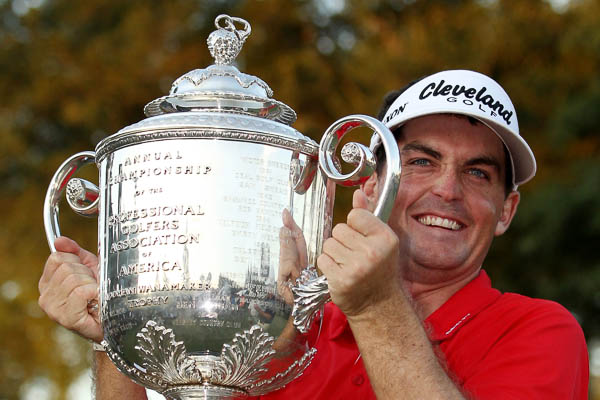
Keegan Bradley, a graduate of the NGA Hooters Tour, won the 2011 PGA Championship and is one of the Tour’s best success stories.
And now that the Q-School has been revised to replenish the roster of the Web.com Tour, expect more players to take up a path of apprenticeship that could meander through the Pepsi Tour, over to the Peach State Professional Golf Tour, and everything in-between. With more than 60 tours in operation world-wide, the prevailing wisdom ought to be play hard and pack light.
So You Want To Run A Mini Tour?
Jeff Flees used to manage a mortgage firm in Worthington, Ohio. But his wife’s protracted health concerns led him to reevaluate his career prospects. Nowadays, he’s the president of a three-person operation that runs the nascent Flagship Golf Tour.
“I had a successful career in the mortgage banking industry for 16 years, however in 2011 my wife had two major surgeries, one of which was brain surgery to clip aneurysms she had been living with,” says Flees. “My wife is one of the most incredible, inspirational people you will ever meet or know. I felt it was important to take time off to be with her while she recovered. When the time was right, my passion for golf and experience with people in the industry led my to analyze the developmental tour business and start the Flagship Golf Tour.”
The first scheduled event will be played this summer at The Journey at Pechanga in Temecula, Calif. The single day, 18-hole stroke play championship will feature a $5,000 purse and will benefit a number of charities including the Brain Aneurysm Foundation. The entry fee for professionals is $300 ($200 for amateurs) and unlike many higher profile tours, there is no annual membership fee.
For those of us who have never played golf for a living, taking up membership on a mini tour is a significant expense when combined with standard tournament fees and general travel expenses. Existing tours with deep fields and decent purses can charge $1,000 or more for membership. That will help you get a bona fide member packet, a tour hat and access to practice facilities at host courses. To actually play in a tournament event, you’ll likely drop close to another $1,000. A single season on the NGA Hooters’ 2013 Carolina Series will run a pro golfer a little over $10,000 in fees (depending on whether or not they have pre-existing status on the tour). Sounds almost reasonable until you start factoring things like groceries and gas money, or taking a date out to a dinner and a movie.
By contrast, there’s next to no risk to play a Flagship Golf Tour event and the tour awards prize money to the top 33 percent of the field, which is consistent with the policy maintained by more established entities. The tour does differ significantly from many competitors in that tournament events are spread out nationally and a champion is crowned after 18 holes.
“We decided on the one-day 18-hole tournaments because they make more logistical and financial sense,” says Flees. “The benefit of a one-day, 18-hole event is that we can keep the expenses down and reduce the time commitment for everyone involved in the tournament. We respect what the more established tours are doing. We are not trying to directly compete with them.”
Whether the Flagship Golf Tour finds its niche and succeeds beyond the first couple of seasons is difficult to predict. The term “boom and bust” is often used to describe mini tours that have disappeared after some initial success. Not surprisingly, the pressure to succeed falls squarely on a busy owner’s shoulders. You’re expected to be equally adept at playing the role of savvy business manager and gregarious promoter. Some days call for negotiating contracts with vendors and sponsors. Other days you’ll be rubbing elbows with potential investors or stumping on behalf of your tour around the clock on Twitter.
For many business executives, running a mini tour is a labor of love (not to mention an expensive hobby).
Alex Spanos had a brief run lending his name to one of the preeminent developmental tours on the West Coast before scuttling the business after three years. Spanos was a scratch golfer in his youth and made his fortune in the construction services industry. He is better known for owning a majority stake in the San Diego Chargers football team.
Full field events on the Spanos California Tour featured sizable purses including a $250,000 cash grab called the A.G. Spanos California Open. Local boys Jason Gore, John Merrick and Peter Tomasulo had stints on the tour before moving on to play much bigger venues.
“I have always wanted to be part of a golf tour,” Spanos was quoted as saying. “My goal with this tour is to have it become the biggest and best in this state, if not the country, where young professionals and amateurs get the opportunity to show their talent and ability.”
Even in its final year of operation, the California Tour was arguably still growing. The tour signed Ameriquest Mortgage Company as a presenting sponsor, hired a San Diego area public relations firm to raise brand awareness, increased the number of events to 16 and set aside $2.5 million in available winnings. But they shut the tour down anyway. Perhaps that was the intention all along.
According to executives associated with Spanos, running the tour had become prohibitively expensive. It also didn’t help that a far more expansive developmental tour made a glitzy splash in 2006, promising tournament winnings to rival the PGA Tour.
Backed by the now defunct Greens Worldwide Inc., the U.S. Pro Golf Tour was expected to offer $300,000 for a standard event and as much as $5 million for one of its majors that would be played on a Donald Trump-owed course and broadcast on television by ESPN. There were rumblings about impending doom from the start and the tour folded after the initial season. In the process, the U.S. Pro Golf Tour defrauded hundreds of golfers who forked over thousands of dollars to participate in events that were never going to be staged.
As any professional golfer who has scrambled on the mini tours can tell you, there are plenty of similar misadventures that players have fallen victim to. Most of them are simply too obscure to grab the public’s attention, even within golfing circles. And in some ways, it’s a perverse right of passage.
The (Not So) Charmed Life Of A Professional Golfer
More than likely, you haven’t heard of Andrew Jensen. He’s just another golfer playing on the PGA Tour of Canada who’s had scrapes with success, failure, injuries and heartbreak. But I’m getting ahead of myself.
We pick up his story in March. Jensen has driven down to Florida, as far south from frigid Ottawa as his Pontiac G6 will take him. He intends to spend a month living in the Sarasota area getting into shape for a season that will play out primarily back in Canada. Except that the weather in Florida, in fact for much of the southern United States, isn’t living up to expectations.
Too many mornings in the Sunshine State start off borderline freezing; as for Jensen’s game, it’s not a whole lot better. In his first competitive event of the season, he shoots 2-over and misses the cut. Over the next several weeks his game starts trending in the right direction. He records his best finish on the Florida swing at TPC Prestancia in Sarasota. It’s a limited-field event of 28 participants playing for a purse that barely covers rent for a single-bedroom apartment on Manhattan’s Upper West Side.
Jensen has an opportunity to finish 2-under on the first day, but rinses two balls on the last hole for an ugly double. He plays marginally worse the next day, making three straight bogies on the front nine, carding a 75 and finishing three strokes outside of earning a paycheck.
Three events come and go and all Jensen has to show for it some middling scores. It’s a good blow to one’s wallet (and psyche), but Jensen has developed some thick skin over the years. He’s been playing professionally off and on since 2008. He’s taken time off to heal from injuries and to recover from periodic episodes of depression. And while it may be difficult to spin positives from his Florida swing based on scoring alone, Jensen is grateful to be playing golf regularly again.
“When I was playing injured in 2010 and playing bad . . . the debt was increasing fast,” says Jensen. “Golf was no longer fun, it was work, it was gambling to break even. My passion for the game left me very quickly but I tried to tough it out and keep playing regardless. That mentality bled into two awful seasons on tour and my eventual hanging up the clubs in 2011 to enter into the real world and start working and getting above water financially. Luckily, over time the passion came back.”
Jensen played competitively for the University of Ottawa and qualified to play for the Canadian Tour the year following his graduation in 2007. Although some golfers would have journeyed south to play in more seasonably warm conditions year-round, Jensen preferred to stay closer to home, not all that surprising for a person who habitually found comfort in maintaining rigorous routine.
Unfortunately, there was very little in the way of predictability to his first three seasons on tour. Jensen made the cut just twice in 14 events in 2008, making $870. He earned another $3,100 on the tour in 2010-11 and watched his confidence fade as debts rose.
“When you can solely focus on the routine and the process, good play takes care of itself,” says Jensen. “When you have to figure out a way to pay the bills, it takes away from your routine. Over the years, my play has struggled and consequently my funds have depleted, forcing me into off-season work in Canada over the winters. The routine has to switch to fitness, indoor practice, mental work, and above all a ‘real job.’”
His outlook rapidly declined in 2011. A family physician prescribed an anti-depressant medication that had an unintended side-effect of actually increasing suicidal urgings. Standing over a bathroom sink with a mouth full of anti-depressant pills, Jensen nearly took his life that September. Fortunately he spat the medication out and was weened off the anti-depressant a few weeks later. Through therapy, Jensen came to regard golf as a trigger for his mental issues.
“Every time I played poorly, it just kept getting worse and worse emotionally,” Jensen told the Ottawa Citizen in 2012.
Jensen isn’t the only golfer who has struggled with depression. The LPGA Tour’s Christina Kim was openly forthcoming about her own personal struggles in an interview with Golf Digest. Still, there aren’t many golfers, let alone athletes in general, that are willing to go public. It is habitually accepted that athletes need to maintain an edge over their competition. And nothing blows an athlete’s cover faster than revealing they have fears and doubts.
“The numbers on depression are staggering, it affects far more people than many believe,” says Jensen. “The pressure, isolation and competition in professional golf are massive triggers to get players down on themselves both on and off the course. From my experiences with mental illness it’s a hard road to play golf and keep things silent. The minute I came out with my struggles, the support and solidarity that came from fellow players was great. No one knows the struggles of a mini tour player better than a fellow mini tour player.”
Historically, the various developmental tours have left players to their own devices. Some tours offer discounts on sponsor-provided apparel and equipment, but rarely is sports psychology factored into any of the few membership perks enjoyed on tour. By offering player coaching from the outset, the Flagship Golf Tour is looking to differentiate itself even further from its more established competitors.
“We are working with excellent professionals who can offer our players guidance in these areas,” says Flees. “The players will get initial information and coaching made available to them free of charge, however if they wish to retain these professionals for additional assistance there would be a charge.”
The Flagship Golf Tour has developed a relationship with David Donatucci, a Titelist Performance Institute certified trainer a member of the PGA of America, as well as PGA member Rick Sessinghaus, a proven sports psychologist. It will be interesting to see how many players actually seek out coaching and if it spurs other developmental tours to consider similar service offerings in the future.
As Jensen can tell you from experience, playing on the mini tours is a grind. Reflecting on the past five years as a golf pro, Jensen says, “[The mini tours haven’t] taught me too much about golf itself, apart from the reality that making putts is everything. It’s taught me that I am very determined and driven, easily discouraged at times, but still very motivated. Hard work for five years really hasn’t gotten me too far in this game so I’ve learned I need to work smarter now.”
A Long And Winding Road
Imagine you’re 16 years old, living by yourself in California. Your preternatural golfing abilities land you a future spot on the University of Oklahoma golf team. Your stellar college play gets noticed and you make the Walker Cup team. After three years you leave school early and declare your intentions to turn pro. You receive a sponsor’s exemption into your first PGA Tour event and you finish runner up. A year later you earn tour card in your first go-around at Q-School and ultimately become a multimillionaire before the age of 22.
It’s almost a lock that most golfing careers will not pan out like Anthony Kim’s supercharged ascent to stardom. With any luck, you might be fortunate enough mimic James Hahn, who clawed his way onto the PGA Tour after spending nine years playing on the mini tours and supplementing his income selling ladies shoes at Nordstrom’s.
So if you are a talented golfer, what exactly are your chances?
In an unrelated sport, the NCAA has compiled statistics on the number of high school basketball players who continue to play professionally after graduating from college. Of the roughly 156,000 high school seniors who play basketball, 44 will be drafted into the NBA. Even at less than 1 percent, a basketball player has a better chance of filling one of the 350 or so roster spots in the NBA than a golfer has of sharing a fairway with Phil Mickelson.
Andrew Jensen doesn’t believe that a talent gap is keeping most mini tour players from propelling themselves to the next level.
“I think it has more to do with the off course hurdles than the competition,” says Jensen. “I’ve seen many great players pack it in because of their financial situation, the travel, or the time away from family, just to name a few reasons. I don’t believe players stop because they don’t think they have what it takes.”
There are thousands of golfers playing on the mini tours every year. What happens to the ones that don’t make it?
Perhaps some of them get a taste of success at the higher reaches of golf and regress. Others washout after only a few seasons on the road. Some quit playing and take up teaching while others quit the game entirely.
In spite of what is easily construed as abject failure, any player who has made it as far as the mini tours has an experience with the game that few golfers rarely come in contact with. It may not be the sort of ending that a Hollywood producer would dream up. But as golf announcer Gary Koch famously quipped, it’s better than most.
- LIKE79
- LEGIT14
- WOW6
- LOL0
- IDHT0
- FLOP0
- OB0
- SHANK0
Opinion & Analysis
The Wedge Guy: What really makes a wedge work? Part 2

In my last post, I explained the basic performance dynamics of “smash factor” and “gear effect” as they apply to your wedges and your wedge play success. If you missed that post, you can read it here.
At the end of that post, I promised “part 2” of this discussion of what makes a wedge work the way it does. So, let’s dive into the other two components of any wedge – the shaft and the grip.
It’s long been said that the shaft is “the engine of the golf club.” The shaft (and grip) are your only connection to all the technologies that are packed into the head of any golf club, whether it be a driver, fairway, hybrid, iron, wedge or even putter.
And you cannot ignore those two components of your wedges if your goal is optimizing your performance.
I’ve long been an advocate of what I call a “seamless transition” from your irons into your wedges, so that the feel and performance do not disconnect when you choose a gap wedge, for example, instead of your iron-set-matching “P-club.” In today’s golf equipment marketplace, more and more golfers are making the investment of time and money to experience an iron fitting, going through trial and error and launch monitor measuring to get just the right shaft in their irons.
But then so many of those same golfers just go into a store and choose wedges off the retail display, with no similar science involved at all. And that’s why I see so many golfers with a huge disconnect between their custom-fitted irons, often with lighter and/or softer graphite or light steel shafts . . . and their off-the-rack wedges with the stock stiff steel ‘wedge flex’ shaft common to those stock offerings.
If your wedge shafts are significantly heavier and stiffer than the shafts in your irons, it is physically impossible for you to make the same swing. Period.
To quickly improve your wedge play, one of the first things you can do is have your wedges re-shafted with the same or similar shaft that is in your irons.
There’s another side of that shaft weight equation; if you don’t have the forearm and hand strength of a PGA Tour professional, you simply cannot “handle” the same weight shaft that those guys play to master the myriad of ‘touch shots’ around the greens.
Now, let’s move on to the third and other key component of your wedges – the grips. If those are not similar in shape and feel to the grips on your irons, you have another disconnect. Have your grips checked by a qualified golf club professionals to make sure you are in sync there.
The one caveat to that advice is that I am a proponent of a reduced taper in your wedge grips – putting two to four more layers of tape under the lower hand, or selecting one of the many reduced taper grips on the market. That accomplishes two goals for your scoring.
First, it helps reduce overactive hands in your full and near-full wedge swings. Quiet hands are key to good wedge shots.
And secondly, it provides a more consistent feel of the wedge in your hands as you grip down for those shorter and more delicate shots around the greens. And you should always grip down as you get into those touch shots. I call it “getting closer to your work.”
So, if you will spend as much time selecting the shafts and grips for your wedges as you do choosing the brand, model, and loft of them, your scoring range performance will get better.
More from the Wedge Guy
- The Wedge Guy: What really makes a wedge work? Part 1
- The Wedge Guy: The easiest-to-learn golf basic
- The Wedge Guy: Golf mastery begins with your wedge game
- LIKE2
- LEGIT2
- WOW0
- LOL1
- IDHT1
- FLOP0
- OB0
- SHANK3
19th Hole
Vincenzi’s 2024 Wells Fargo Championship betting preview: Tommy Fleetwood ready to finally land maiden PGA Tour title

The PGA Tour season ramps back up this week for another “signature event,” as golf fans look forward to the year’s second major championship next week.
After two weaker-field events in the Zurich Classic and the CJ Cup Byron Nelson, most of the best players in the world will head to historic Quail Hollow for one of the best non-major tournaments of the year.
Last season, Wyndham Clark won the event by four shots.
Quail Hollow is a par-71 measuring 7,521 yards that features Bermudagrass greens. The tree-lined, parkland style course can play quite difficult and features one of the most difficult three-hole stretches in golf known as “The Green Mile,” which makes up holes 16-18: two mammoth par 4s and a 221-yard par 3. All three holes have an average score over par, and water is in play in each of the last five holes on the course.
The field is excellent this week with 68 golfers teeing it up without a cut. All of the golfers who’ve qualified are set to tee it up, with the exception of Scottie Scheffler, who is expecting the birth of his first child.
Past Winners at Quail Hollow
- 2023: Wyndham Clark (-19)
- 2022: Max Homa (-8)
- 2021: Rory McIlroy (-10)
- 2019: Max Homa (-15)
- 2018: Jason Day (-12)
- 2017: Justin Thomas (-8) (PGA Championship)
- 2016: James Hahn (-9)
- 2015: Rory McIlroy (-21)
Key Stats For Quail Hollow
Strokes Gained: Approach
Strokes gained: Approach will be extremely important this week as second shots at Quail Hollow can be very difficult.
Total SG: Approach Over Past 24 Rounds
- Akshay Bhatia (+1.16)
- Tom Hoge (+1.12)
- Corey Conners (+1.01)
- Shane Lowry (+0.93)
- Austin Eckroat (+0.82)
Strokes Gained: Off the Tee
Quail Hollow is a long course on which it is important to play from the fairway. Both distance and accuracy are important, as shorter tee shots will result in approach shots from 200 or more yards. With most of the holes heavily tree lined, errant drives will create some real trouble for the players.
Strokes Gained: Off the Tee Past 24 Rounds:
- Ludvig Aberg (+0.73)
- Rory McIlroy (+0.69)
- Xander Schauffele (+0.62)
- Viktor Hovland (+0.58)
- Chris Kirk (+0.52)
Proximity: 175-200
The 175-200 range is key at Quail Hollow. Players who can hit their long irons well will rise to the top of the leaderboard.
Proximity: 175-200+ over past 24 rounds:
- Cameron Young (28’2″)
- Akshay Bhatia (29’6″)
- Ludvig Aberg (+30’6″)
- Sam Burns (+30’6″)
- Collin Morikawa (+30’9″)
SG: Total on Tom Fazio Designs
Players who thrive on Tom Fazio designs get a bump for me at Quail Hollow this week.
SG: Total on Tom Fazio Designs over past 36 rounds:
- Patrick Cantlay (+2.10)
- Rory McIlroy (+1.95)
- Tommy Fleetwood (+1.68)
- Austin Eckroat (+1.60)
- Will Zalatoris (+1.57)
Strokes Gained: Putting (Bermudagrass)
Strokes Gained: Putting has historically graded out as the most important statistic at Quail Hollow. While it isn’t always predictable, I do want to have it in the model to bump up golfers who prefer to putt on Bermudagrass.
Strokes Gained: Putting (Bermudagrass) Over Past 24 Rounds:
- Taylor Moore (+0.82)
- Nick Dunlap (+.76)
- Wyndham Clark (+.69)
- Emiliano Grillo (+.64)
- Cam Davis (+.61)
Course History
This stat will incorporate players that have played well in the past at Quail Hollow.
Course History over past 36 rounds (per round):
- Rory McIlroy (+2.50)
- Justin Thomas (+1.96)
- Jason Day (+1.92)
- Rickie Fowler (+1.83)
- Viktor Hovland (+1.78)
Wells Fargo Championship Model Rankings
Below, I’ve compiled overall model rankings using a combination of the five key statistical categories previously discussed — SG: Approach (27%), SG: Off the Tee (23%), SG: Total on Fazio designs (12%), Proximity: 175-200 (12%), SG: Putting Bermuda grass (12%), and Course History (14%).
- Wyndham Clark
- Rory McIlroy
- Xander Schauffele
- Shane Lowry
- Hideki Matsuyama
- Viktor Hovland
- Cameron Young
- Austin Eckroat
- Byeong Hun An
- Justin Thomas
2024 Wells Fargo Championship Picks
Tommy Fleetwood +2500 (DraftKings)
I know many out there have Tommy fatigue when it comes to betting, which is completely understandable given his lack of ability to win on the PGA Tour thus far in his career. However, history has shown us that players with Fleetwood’s talent eventually break though, and I believe for Tommy, it’s just a matter of time.
Fleetwood has been excellent on Tom Fazio designs. Over his past 36 rounds, he ranks 3rd in the field in Strokes Gained: Total on Fazio tracks. He’s also been incredibly reliable off the tee this season. He’s gained strokes in the category in eight of his past nine starts, including at The Masters, the PLAYERS and the three “signature events” of the season. Tommy is a golfer built for tougher courses and can grind it out in difficult conditions.
Last year, Fleetwood was the first-round leader at this event, firing a Thursday 65. He finished the event in a tie for 5th place.
For those worried about Fleetwood’s disappointing start his last time out at Harbour Town, he’s bounced back nicely after plenty of poor outings this season. His T7 at the Valero Texas Open was after a MC and T35 in his prior two starts and his win at the Dubai Invitational came after a T47 at the Sentry.
I expect Tommy to bounce back this week and contend at Quail Hollow.
Justin Thomas +3000 (DraftKings)
It’s been a rough couple of years for Justin Thomas, but I don’t believe things are quite as bad as they seem for JT. He got caught in the bad side of the draw at Augusta for last month’s Masters and has gained strokes on approach in seven of his nine starts in 2024.
Thomas may have found something in his most recent start at the RBC Heritage. He finished T5 at a course that he isn’t the best fit for on paper. He also finally got the putter working and ranked 15th in Strokes Gained: Putting for the week.
The two-time PGA champion captured the first of his two major championships at Quail Hollow back in 2017, and some good vibes from the course may be enough to get JT out of his slump.
Thomas hasn’t won an event in just about two years. However, I still believe that will change soon as he’s been one of the most prolific winners throughout his PGA Tour career. Since 2015, he has 15 PGA Tour wins.
Course history is pretty sticky at Quail Hollow, with players who like the course playing well there on a regular basis. In addition to JT’s PGA Championship win in 2017, he went 4-1 at the 2022 Presidents Cup and finished T14 at the event last year despite being in poor form. Thomas can return as one of the top players on the PGA Tour with a win at a “signature event” this week.
Cameron Young +3500 (DraftKings)
For many golf bettors, it’s been frustrating backing Cam Young this season. His talent is undeniable, and one of the best and most consistent performers on the PGA Tour. He just hasn’t broken through with a victory yet. Quail Hollow has been a great place for elite players to get their first victory. Rory McIlroy, Anthony Kim, Rickie Fowler and Wyndham Clark all notched their first PGA Tour win at Quail.
Throughout Cam Young’s career, he has thrived at tougher courses with strong fields. This season, he finished T16 at Riviera and T9 at Augusta National, demonstrating his preference of a tough test. His ability to hit the ball long and straight off the tee make him an ideal fit for Quail Hollow, despite playing pretty poorly his first time out in 2023 (T59). Young should be comfortable playing in the region as he played his college golf at Wake Forest, which is about an hour’s drive from Quail Hollow.
The 26-year-old has played well at Tom Fazio designs in the past and ranks 8th in the field in Strokes Gained: Total on those courses in his last 36 rounds. Perhaps most importantly, this season, Young is the best player on the PGA Tour in terms of proximity from 175-200 in the fairway, which is where a plurality and many crucial shots will come from this week.
Young is an elite talent and Quail Hollow has been kind to players of his ilk who’ve yet to win on Tour.
Byeong Hun An +5000 (FanDuel)
Byeong Hun An missed some opportunities last weekend at the CJ Cup Byron Nelson. He finished T4 and played some outstanding golf, but a couple of missed short putts prevented him from getting to the winning score of -23. Despite not getting the win, it’s hard to view An’s performance as anything other than an overwhelming success. It was An’s fourth top-ten finish of the season.
Last week, An gained 6.5 strokes ball striking, which was 7th in the field. He also ranked 12th for Strokes Gained: Approach and 13th for Strokes Gained: Off the Tee. The South Korean has been hitting the ball so well from tee to green all season long and he now heads to a golf course that should reward his precision.
An’s driver and long irons are absolute weapons. At Quail Hollow, players will see plenty of approach shots from the 175-200 range as well as some from 200+. In his past 24 rounds, Ben ranks 3rd in the field in proximity from 175-200 and 12th in proximity from 200+. Playing in an event that will not end up being a “birdie” fest should help An, who can separate from the field with his strong tee to green play. The putter may not always cooperate but getting to -15 is much easier than getting to -23 for elite ball strikers who tend to struggle on the greens.
Winning a “signature event” feels like a tall task for An this week with so many elite players in the field. However, he’s finished T16 at the Genesis Invitational, T16 at The Masters and T8 at the Arnold Palmer Invitational. The 32-year-old’s game has improved drastically this season and I believe he’s ready to get the biggest win of his career.
- LIKE8
- LEGIT4
- WOW1
- LOL1
- IDHT0
- FLOP0
- OB0
- SHANK1
19th Hole
Vincenzi’s LIV Golf Singapore betting preview: Course specialist ready to thrive once again

After another strong showing in Australia, LIV Golf will head to Sentosa Golf Club in Singapore looking to build off of what was undoubtedly their best event to date.
Sentosa Golf Club sits on the southern tip of Singapore and is one of the most beautiful courses in the world. The course is more than just incredible scenically; it was also rated 55th in Golf Digest’s top-100 courses in 2022-2023 and has been consistently regarded as one of the best courses in Asia. Prior to being part of the LIV rotation, the course hosted the Singapore Open every year since 2005.
Sentosa Golf Club is a par 71 measuring 7,406 yards. The course will require precise ball striking and some length off the tee. It’s possible to go low due to the pristine conditions, but there are also plenty of hazards and difficult spots on the course that can bring double bogey into play in a hurry. The Bermudagrass greens are perfectly manicured, and the course has spent millions on the sub-air system to keep the greens rolling fast. I spoke to Asian Tour player, Travis Smyth, who described the greens as “the best [he’s] ever played.”
Davis Love III, who competed in a Singapore Open in 2019, also gushed over the condition of the golf course.
“I love the greens. They are fabulous,” the 21-time PGA Tour winner said.
Love III also spoke about other aspects of the golf course.
“The greens are great; the fairways are perfect. It is a wonderful course, and it’s tricky off the tee.”
“It’s a long golf course, and you get some long iron shots. It takes somebody hitting it great to hit every green even though they are big.”
As Love III said, the course can be difficult off the tee due to the length of the course and the trouble looming around every corner. It will take a terrific ball striking week to win at Sentosa Golf Club.
In his pre-tournament press conference last season, Phil Mickelson echoed many of the same sentiments.
“To play Sentosa effectively, you’re going to have a lot of shots from 160 to 210, a lot of full 6-, 7-, 8-iron shots, and you need to hit those really well and you need to drive the ball well.”
Golfers who excel from tee to green and can dial in their longer irons will have a massive advantage this week.
Stat Leaders at LIV Golf Adelaide:
Fairways Hit
1.) Louis Oosthuizen
2.) Anirban Lahiri
3.) Jon Rahm
4.) Brendan Steele
5.) Cameron Tringale
Greens in Regulation
1.) Brooks Koepka
2.) Brendan Steele
3.) Dean Burmester
4.) Cameron Tringale
5.) Anirban Lahiri
Birdies Made
1.) Brendan Steele
2.) Dean Burmester
3.) Thomas Pieters
4.) Patrick Reed
5.) Carlos Ortiz
LIV Golf Individual Standings:
1.) Joaquin Niemann
2.) Jon Rahm
3.) Dean Burmester
4.) Louis Oosthuizen
5.) Abraham Ancer
LIV Golf Team Standings:
1.) Crushers
2.) Legion XIII
3.) Torque
4.) Stinger GC
5.) Ripper GC
LIV Golf Singapore Picks
Sergio Garcia +3000 (DraftKings)
Sergio Garcia is no stranger to Sentosa Golf Club. The Spaniard won the Singapore Open in 2018 by five strokes and lost in a playoff at LIV Singapore last year to scorching hot Talor Gooch. Looking at the course setup, it’s no surprise that a player like Sergio has played incredible golf here. He’s long off the tee and is one of the better long iron players in the world when he’s in form. Garcia is also statistically a much better putter on Bermudagrass than he is on other putting surfaces. He’s putt extremely well on Sentosa’s incredibly pure green complexes.
This season, Garcia has two runner-up finishes, both of them being playoff losses. Both El Camaleon and Doral are courses he’s had success at in his career. The Spaniard is a player who plays well at his tracks, and Sentosa is one of them. I believe Sergio will get himself in the mix this week. Hopefully the third time is a charm in Singapore.
Paul Casey +3300 (FanDuel)
Paul Casey is in the midst of one of his best seasons in the five years or so. The results recently have been up and down, but he’s shown that when he’s on a golf course that suits his game, he’s amongst the contenders.
This season, Casey has finishes of T5 (LIV Las Vegas), T2 (LIV Hong Kong), and a 6th at the Singapore Classic on the DP World Tour. At his best, the Englishman is one of the best long iron players in the world, which makes him a strong fit for Sentosa. Despite being in poor form last season, he was able to fire a Sunday 63, which shows he can low here at the course.
It’s been three years since Casey has won a tournament (Omega Dubai Desert Classic in 2021), but he’s been one of the top players on LIV this season and I think he can get it done at some point this season.
Mito Pereira +5000 (Bet365)
Since Mito Pereira’s unfortunate demise at the 2022 PGA Championship, he’s been extremely inconsistent. However, over the past few months, the Chilean has played well on the International Series as well as his most recent LIV start. Mito finished 8th at LIV Adelaide, which was his best LIV finish this season.
Last year, Pereira finished 5th at LIV Singapore, shooting fantastic rounds of 67-66-66. It makes sense why Mito would like Sentosa, as preeminent ball strikers tend to rise to the challenge of the golf course. He’s a great long iron player who is long and straight off the tee.
Mito has some experience playing in Asia and is one of the most talented players on LIV who’s yet to get in the winner’s circle. I have questions about whether or not he can come through once in contention, but if he gets there, I’m happy to roll the dice.
Andy Ogletree +15000 (DraftKings)
Andy Ogletree is a player I expected to have a strong 2024 but struggled early in his first full season on LIV. After failing to crack the top-25 in any LIV event this year, the former U.S. Amateur champion finally figured things out, finished in a tie for 3rd at LIV Adelaide.
Ogletree should be incredible comfortable playing in Singapore. He won the International Series Qatar last year and finished T3 at the International Series Singapore. The 26-year-old was arguably the best player on the Asian Tour in 2023 and has been fantastic in the continent over the past 18 months.
If Ogletree has indeed found form, he looks to be an amazing value at triple-digit odds.
- LIKE3
- LEGIT3
- WOW1
- LOL2
- IDHT0
- FLOP2
- OB0
- SHANK0
-

 19th Hole3 weeks ago
19th Hole3 weeks agoJustin Thomas on the equipment choice of Scottie Scheffler that he thinks is ‘weird’
-

 19th Hole3 weeks ago
19th Hole3 weeks ago‘Absolutely crazy’ – Major champ lays into Patrick Cantlay over his decision on final hole of RBC Heritage
-

 19th Hole2 weeks ago
19th Hole2 weeks agoLET pro gives detailed financial breakdown of first week on tour…and the net result may shock you
-

 19th Hole2 days ago
19th Hole2 days agoReport: LIV star turns down PGA Championship invite due to ‘personal commitments’
-

 19th Hole1 week ago
19th Hole1 week agoGary Player claims this is what ‘completely ruined’ Tiger Woods’ career
-

 19th Hole3 weeks ago
19th Hole3 weeks agoTaylorMade signs 15-year-old AJGA Rolex Junior Player of the Year to an NIL contract
-

 Whats in the Bag2 weeks ago
Whats in the Bag2 weeks agoTeam McIlowry (Rory McIlroy, Shane Lowry) winning WITBs: 2024 Zurich Classic
-

 Equipment1 week ago
Equipment1 week agoGolf fans left surprised by LIV’s choice of course for its 2024 individual championship event

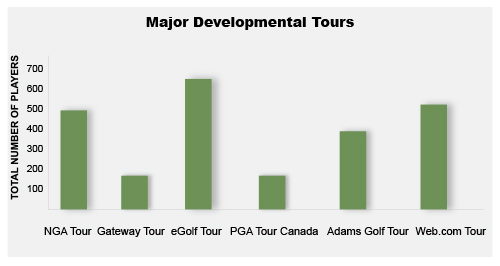
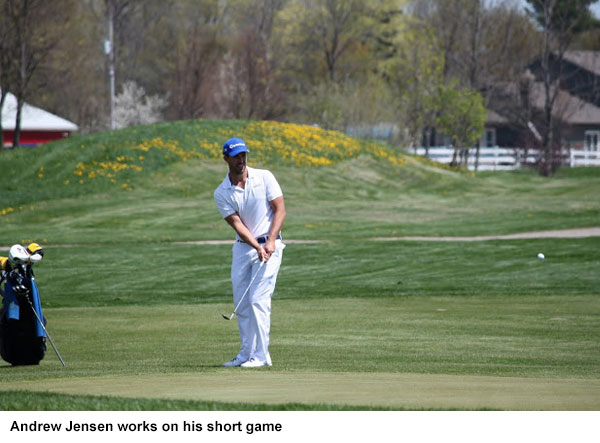
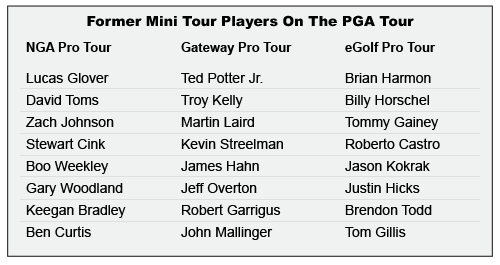


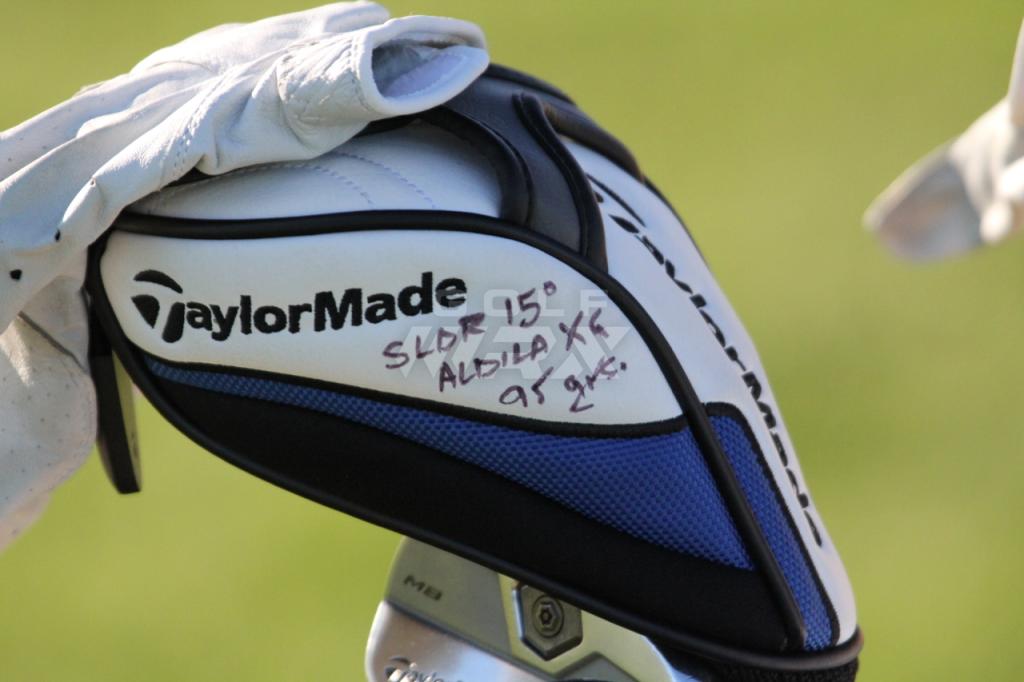

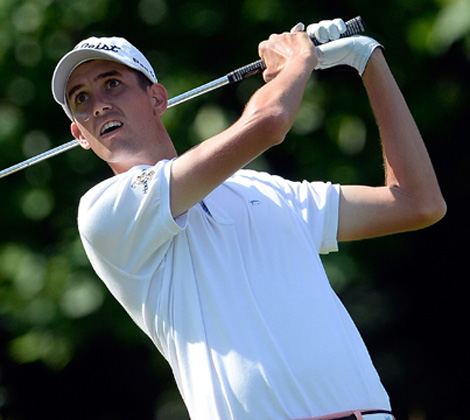


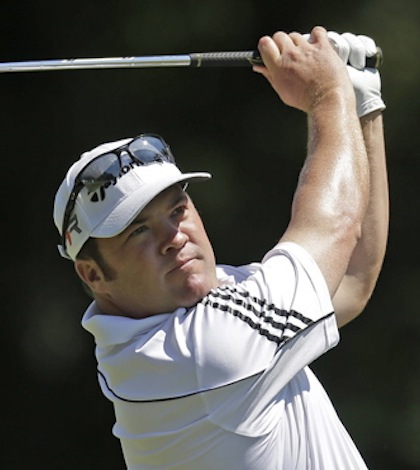
















Mike Boatright
Jan 23, 2017 at 4:31 pm
Iv’e researched heavily these mini tours and have found the leaders to have a scoring average of say 65.66 etc.. The pga tour needs to get off it’s elitists ass and give these good players a legitimate chance! Any time you set up a format that requires you to either have a sponsor exemption or play great for 6 days straight just to make it on the minor leagues is kinda making it far fetched for the majority of good players who aren’t rich. They do have some monday qualifying events which is just a blood fest first you need to pre qualify to make it into the qualifier which is you vs 4 guys usually a 65 loses and a 64 wins,then you qualify for the monday and it’s the same story you shoot 67 on a windy day the other guy shoots 66. By then the winner is so tired and nervous from his start that he shoots 75 70 and misses the cut by one stroke how is this fair?
adam
Jul 25, 2014 at 9:01 pm
Listen, if you’re good enough you will sail through Web.com Q School and be on that AAA tour. If you’re good enough there, you’ll be on the PGA tour. Much easier today. Web.com Q school doesn’t care if you went to Stanford or Truckee Meadows Community College.
jess robinson
Jun 7, 2013 at 12:31 pm
“Golf is happiness for
Happiness is achievement.
The father of achievement is motivation
The mother is encouragement.
The fine golf swing is truly achievement
Man may lie, cheat, and steal for gain.
But, these will never gain the golf swing
To gain the golf swing man must work.
Yet it is work without toil
It is exercise without the boredom.
It is intoxication without the hangover
It is stimulation without the pills.
It is failure yet its successes shine even more brightly
It is frustration yet it nourishes patience.
It irritates yet its soothing is far greater
It is futility yet it nurtures hope.
It is defeating yet it generates courage
It is humbling yet it ennobles the human spirit.
It is dignity yet it rejects arrogance
Its price is high yet its rewards are richer
Some say it’s a boy’s pastime yet it builds men
It is a buffer for the stresses of today’s living.
It cleanses the mind and rejuvenates the body
It is these things and many more.
For those of us who know it and love it
Golf is truly happiness.”
— Paul Bertholy
Frank Dolan
May 19, 2013 at 6:48 pm
Most authors make mistakes, specifically for those readers who look for mistakes. If you look past the mistakes, you will really enjoy the article. Another home run for you Mr. Cage. Keep those articles coming – I enjoy them tremendously.
P. S. – Did I make any grammatical errors?
youstink
May 11, 2013 at 7:43 pm
I never want to chase a dream. I just want to go to my 9-5 job and sit in my cubical all day and grind my teeth over the fact my wife is probably banging the pool guy that I pay with the money I saved from my boring conservative life…
When the day ends I want to put myself to sleep by correcting Blog articles on a golf website full of folks that can’t appreciate truthful information because they think they know everything…
Sean
May 10, 2013 at 4:36 pm
I enjoyed the article. There are a few segments I can relate to as well.
Steve Pratt
May 10, 2013 at 1:53 am
I thought this was a terrific article. It brought back good and bad memories of my experiences on various mini tours.
In my opinion, the author nicely captures the essence of life and struggles on the mini tours.
Danny
May 9, 2013 at 7:54 pm
Ian poulter will be broke and infamous in 10 years. They guy never wins except for the Ryder Cup which doesn’t pay. Normally the guys that got it dont flaunt it, and the ones that flaunt it don’t have it. Look at Warren Buffet compared to Donlad Trump. Trump has been bankrupt several times and sues publications that post his real worth which is about 1/10th what he says it is.
Curt
May 10, 2013 at 12:22 am
Donald Trump just inquired about your physical address, so he coulde serve you!!! Dont answer the door!!!
Shawn
May 10, 2013 at 11:20 am
I think you’ll find that a lot of successful people have had bankruptcies in their past. That line of reasoning doesn’t make a lot of sense. Trump’s liquid worth is far less than his worth on paper, but that’s a pretty common thing for people who own a lot of stuff, rather than have a lot of money.
I’m no Poulter fan, but he seems to have an awful lot of cash for a guy that never wins.
sdgfhjkhgjkdfsfg
May 9, 2013 at 7:15 pm
the best line in the article:
“But for every Ian Poulter who owns a fleet of Ferraris and struts around like a movie star, ”
Ian is a new money brat. It’s amazing how much that guy brags.
Dave
May 10, 2013 at 10:12 am
If there was one player I could punch in the face it would no doubt be IJP. By the way, the logo for his clothing line is ABSOLUTELY TERRIBLE… what designers is this guy hiring!?
Tool Status
May 9, 2013 at 4:09 pm
id probably tear up one of these mini tours, but id rather just spend my time with the ladies
gorgor
May 11, 2013 at 10:17 pm
+! internet
danny
May 9, 2013 at 3:51 pm
I blame these guy’s parents. There comes a time in everyone’s life when you can’t chase your dreams any longer. Sometimes we can’t see it ourselves and the worst thing you can have is parents and loved ones feeding in to that dream. I had a sister who wanted to be a doctor in the worst way but couldn’t get in to med school. I also had a roommate who longed to be a fighter pilot, yet didn’t have great eye sight. Both of these people were told by loved ones that it’s time to grow up and move on, and both are living happy lives because of it now. It takes a real man to admit when enough is enough and it’s time to move on.
Nick
May 9, 2013 at 9:12 pm
Why Should anyone give up on their dreams ever? You only get one shot at life, do what makes you happy and forget the “realists”. They will be the ones wondering what if and saying I should have when they are too old to live thier dreams. At least you spent your life working 9-5, for whatever that is worth…
Danny
May 9, 2013 at 10:55 pm
It’s selfish. These dreamers will end up with debt and families to pass it on to.
tsunamijohn
May 9, 2013 at 3:35 pm
Question nothing, just drink the Kool-Aid.
Minitourplayer
May 9, 2013 at 2:56 pm
So did the Flagship Tour pay for this article?
Zak Kozuchowski
May 9, 2013 at 3:27 pm
Minitourplayer,
Rusty is a wonderful writer with strong journalism instincts and morals. For you to suggest otherwise shows that you haven’t paid much attention to his previous work, or the GolfWRX Featured Writers program as a whole.
– Zak
t120
May 9, 2013 at 8:34 pm
That…is your opinion, Zak.
I think it goes beyond sounding like an ad, but well-written? I wouldn’t go that far. It’s a few different “HARO” respondents he aggregated into an ambling, unclear rough draft of article. A good journalist doesn’t just take notes and format, he tells a captivating story.
What did he do instead?
1.) He spent a large portion of the article covering a mini-tour that hasn’t yet played a game.
2.) Profiled a Canadian golfer that briefly played in Canada, not U.S. Mini tours.
3.) Dropped a few names of past mini-tour players, yet didn’t expand on them.
4.) Threw in some generalizations about past tour players that may or may not have existed, been scratch golfers, and/or quit for up to 5 various reasons unrelated to their game. Not a single name, or proof backing up that theory.
All of that and I still have no idea what the Hooters, Pepsi or any other mini tour is really like. Maybe interview someone that’s actually been on one or more of the major tours and get a first hand account.
As it stands, if you read this article the only thing you’ll get out of it is “Guys. Even if you’re very, very good, if you can’t afford a nice round number like $10,000/yr – you will be forced to sell shoes at Nordstrom.”
tim roncone
May 10, 2013 at 1:13 am
when you choose to find a negative in something you will always fail to see the good or in this case understand whats he’s trying to portray. i really hope you have better things to do with your life than bash other peoples work. have a nice day tool.
t120
May 10, 2013 at 11:46 pm
So…your response is somehow vindicated because I didn’t write an article? Who’s really the tool here? You didn’t bring anything to the table but a comment about a comment and in total frustration with your inability to make a point – a condescending remark.
Minitourplayer
May 10, 2013 at 9:55 am
Its basically a commercial for a brand new tour that no one has heard of
Dave
May 10, 2013 at 10:09 am
I disagree… I clicked on the article thinking it would in fact be a story about life as a mini-tour player and instead it was disjointed and unrelatable. It’s a shame.
On another note, I find it hard to believe that there are only 156,000 HS seniors playing basketball each year, but who knows.
Shawn
May 10, 2013 at 11:18 am
I completely agree with you. Between the headline that feels kind of misleading, a lot of Typos (“There’s” as was mentioned above and a few other awkward choices) I don’t think this is a very good article at all.
x-15a2
May 9, 2013 at 2:13 pm
The word “there’s” is a contraction for “there is”. That being the case, you’d never write “there is plenty of golfers…”, “there is thousands who don’t.” or “There is thousands of golfers playing on the mini tours every year.” In these cases, you would say “there are” instead of “there is”. For the record, “…there’s next to no risk to play a Flagship Golf Tour event” is the correct use of “there’s”.
The contraction that you are looking for “there are” is “there’re” but besides being difficult to pronounce, “there’re” looks peculiar (and is incorrectly rejected by many spell-checkers). You are probably better off ditching a contraction for “there are”.
Joey5Picks
May 15, 2013 at 3:47 pm
That was a fun post to read. Thanks for the puncuation lesson.